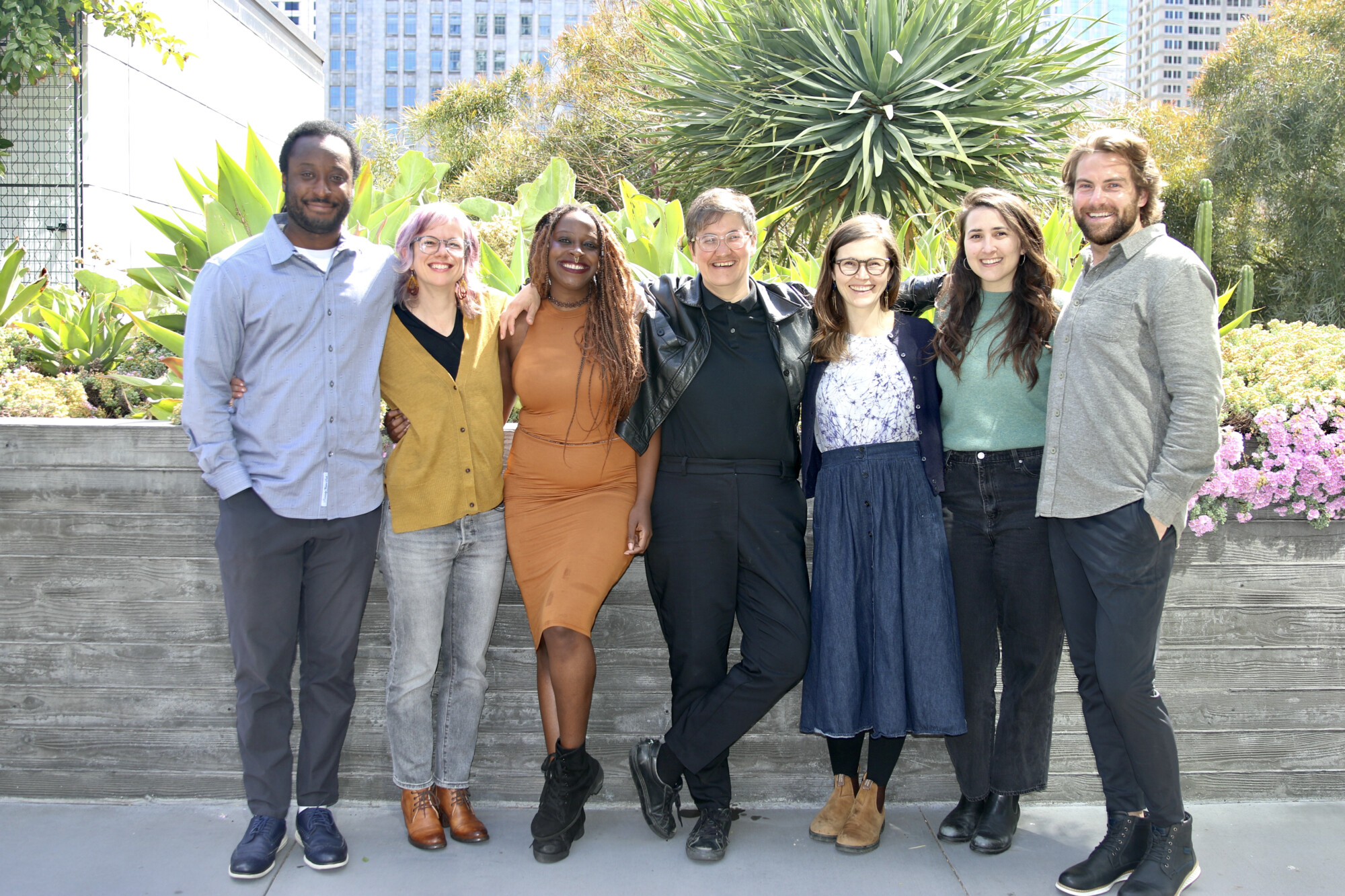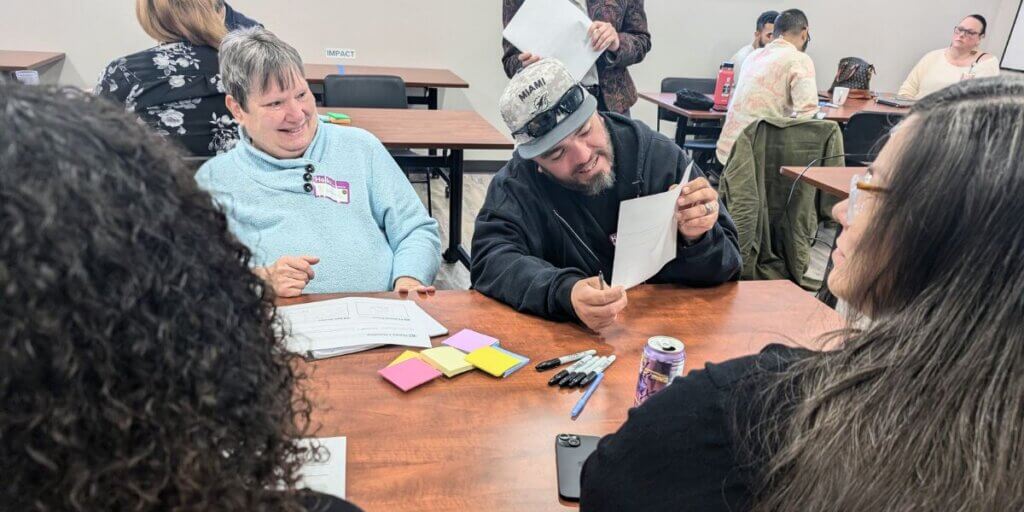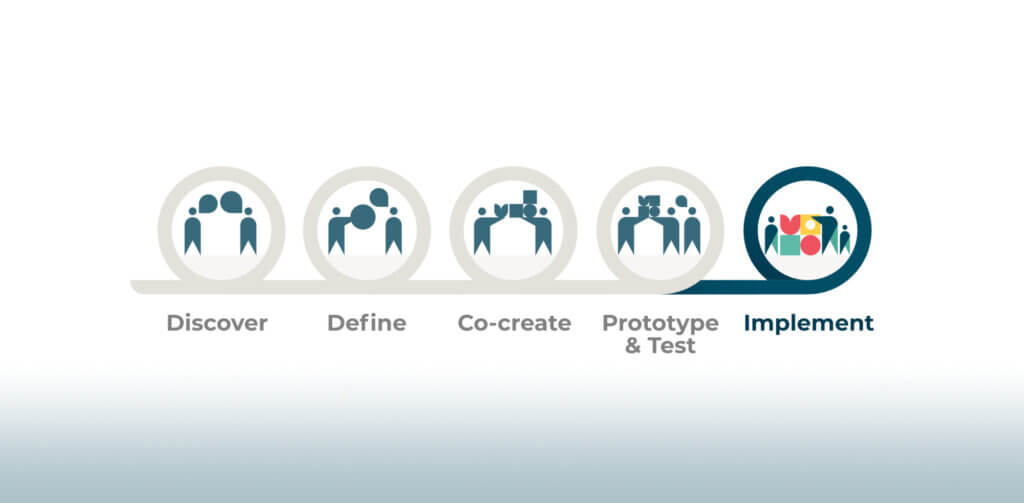
The CivicMakers Team gathered together for what we called a Team Strategy Jam on Monday, June 12th, at our office in downtown San Francisco.
While this was not a full-blown strategic planning session, our small team has recently experienced some shifts (including adding two brand new team members!), and we felt it necessary to review what’s worked and what could be improved in terms of our approach to projects and how we do the work together.
The question we came together to source ideas for was:
How might we do the work we love in a healthy and sustainable way?
Team Reflections
To start off the conversation, we asked each team member what they absolutely love about the work. Here’s what they had to say:
- Brit – loves exploratory conversations with clients that deepen the understanding of a given system or institution. These conversations can lead to empowering frontline workers, who know the systems better than any of us, to trust their instincts and their lived expertise, and also give managers permission to trust them as well!
- Eva – loves that we work in a human-centered approach that provides opportunities to educate clients to center the voices of communities. Eva strives to ensure that community engagement is never performative or superficial. Bringing more diversity and equity into real decision making spaces is their passion and priority.
- Leah – loves the training-related work, and the fact we get to connect with pretty much any public servant, regardless of their role or tenure. This space is about creating different opportunities for how we do our work – and so many have embraced it! This has been especially touching when people who hadn’t felt empowered under current systems (such as people in enforcement-related roles) eagerly applied human-centered approaches to what they could control.
- Kyle – loves that the work can be transformative, and we all get to play a guiding role in that transformation. The human-centered approach we take applies to a broad range of work, and can be highly adaptable. Trust is a key component.
- Julian – loves the impact that he’s seen on the project he worked with us on before coming on-board, where we co-designed a training with public facing transit employees that was intended to benefit them. He found this eye-opening and inspiring, and loves the opportunity to work together on a grander scale and on a variety of projects.
- Cristelle – loves the many opportunities we have to bring theory and practice together, which allows us to continually learn and grow. We get to apply our knowledge of best practices and learn what really works, and then we get new opportunities to apply those learnings.
- Judi – loves the intersection with partners who are doing similar work. It adds a lot of validation to what our small team has been working on for the better part of ten years. There’s also a lot of opportunity that emerges when we take on a collaborative as opposed to competitive mindset.
Opportunity Areas
Next, we reflected on what could be improved about how we do the work. Below are some examples of opportunity areas we’d like to address:
- Taking on fewer but deeper, more meaningful projects
- Having greater insight across the team into projects that are in-flight, so that we might continually learn from each other
- Standardizing our approach to data analysis and synthesis (which might include better leveraging tools we’ve already developed, such as our Data Synthesis Plan)
Our next steps, in true civic design fashion, are to analyze the plus/deltas that we surfaced with the team, then have another session where we ideate, prototype and test potential solutions.
As a small team doing complex, systems-level change work within the still-emerging firm of civic design – there are many more aspirations in the works (and on numerous post-it notes). We’ll leave you with this as a low-barrier starting point, and hope you’ll want to share with us any approaches you’re taking to similar challenges.
It’s important to us that we practice, internally, the frameworks that we apply with our clients. For a glimpse into some of the tools and approaches we use in our strategic planning work, check out our case studies.



